- Home
- Michael Connelly
City of Bones Page 4
City of Bones Read online
Page 4
Bosch dialed Media Relations from memory and told an officer about the case in very general terms. At one point he put his hand over the phone and asked Guyot if he wanted his name put in the press release. The doctor declined. A few minutes later Bosch was finished and hung up. He looked at Guyot.
“Once we clear the scene in a few days the reporters will probably stick around. They’ll be looking for the dog that found the bone, is my guess. So if you want to stay out of it, keep Calamity off the street or they’ll put two and two together.”
“Good advice,” Guyot said.
“And you might want to call your neighbor, Mr. Ulrich, and tell him not to mention it to any reporters, either.”
On the way out of the house Bosch asked Brasher if she wanted her flashlight and she said she didn’t want to bother carrying it while she was helping search the hillside.
“Get it to me whenever,” she said.
Bosch liked the answer. It meant he would get at least one more chance to see her.
Back at the circle Bosch found Edgar lecturing the academy cadets.
“The golden rule of the crime scene, people, is don’t touch anything until it has been studied, photographed and charted.”
Bosch walked into the circle.
“Okay, we ready?”
“They’re ready,” Edgar said. He nodded toward two of the cadets, who were holding metal detectors. “I borrowed those from SID.”
Bosch nodded and gave the cadets and Brasher the same safety speech he had given the forensic crew. They then headed up to the crime scene, Bosch introducing Brasher to Edgar and then letting his partner lead the way through the checkpoint. He took up the rear, walking behind Brasher.
“We’ll see if you want to be a homicide detective by the end of the day,” he said.
“Anything’s got to be better than chasing the radio and washing puke out of the back of your car at the end of every shift.”
“I remember those days.”
Bosch and Edgar spread the twelve cadets and Brasher out in the areas adjacent to the stand of acacia trees and had them begin conducting side-by-side searches. Bosch then went down and brought up the two K-9 teams to supplement the search.
Once things were under way he left Edgar with the cadets and went back to the acacias to see what progress had been made. He found Kohl sitting on an equipment crate and supervising the placement of wooden stakes into the ground so that strings could be used to set the excavation grid.
Bosch had worked one prior case with Kohl and knew she was very thorough and good at what she did. She was in her late thirties with a tennis player’s build and tan. Bosch had once run across her at a city park, where she was playing tennis with a twin sister. They had drawn a crowd. It looked like somebody hitting the ball off a mirrored wall.
Kohl’s straight blonde hair fell forward and hid her eyes as she looked down at the oversized clipboard on her lap. She was making notations on a piece of paper with a grid already printed on it. Bosch looked over her shoulder at the chart. Kohl was labeling the individual blocks with letters of the alphabet as the corresponding stakes were placed in the ground. At the top of the page she had written “City of Bones.”
Bosch reached down and tapped the chart where she had written the caption.
“Why do you call it that?”
She shrugged her shoulders.
“Because we’re setting out the streets and the blocks of what will become a city to us,” she said, running her fingers over some of the lines on the chart in illustration. “At least while we’re working here it will feel like it. Our little city.”
Bosch nodded.
“In every murder is the tale of a city,” he said.
Kohl looked up at him.
“Who said that?”
“I don’t know. Somebody did.”
He turned his attention to Corazon, who was squatting over the small bones on the surface of the soil, studying them while the lens of the video camera studied her. He was thinking of something to say about it when his rover was keyed and he took it off his belt.
“Bosch here.”
“Edgar. Better come on back over here, Harry. We already have something.”
“Right.”
Edgar was standing in an almost level spot in the brush about forty yards from the acacia trees. A half dozen of the cadets and Brasher had formed a circle and were looking down at something in the two-foot-high brush. The police chopper was circling in a tighter circle above.
Bosch got to the circle and looked down. It was a child’s skull partially submerged in the soil, its hollow eyes staring up at him.
“Nobody touched it,” Edgar said. “Brasher here found it.”
Bosch glanced at her and the humor she seemed to carry in her eyes and mouth were gone. He looked back at the skull and pulled the radio off his belt.
“Dr. Corazon?” he said into it.
It was a long moment before her voice came back.
“Yes, I’m here. What is it?”
“We are going to have to widen the crime scene.”
6
WITH Bosch acting as the general overseeing the small army that worked the expanded crime scene, the day progressed well. The bones came out of the ground and the hillside brush easily, as if they had been impatiently waiting a very long time. By noon, three blocks in the grid were being actively excavated by Kathy Kohl’s team, and dozens of bones emerged from the dark soil. Like their archeological counterparts who unearthed the artifacts of the ancients, the dig team used small tools and brushes to bring these bones gently to light. They also used metal detectors and vapor probes. The process was painstaking yet it was moving at an even faster pace than Bosch had hoped for.
The finding of the skull had set this pace and brought a sense of urgency to the entire operation. It was removed from its location first, and the field examination conducted on camera by Teresa Corazon found fracture lines and surgical scarring. The record of surgery assured them they were dealing with relatively contemporary bones. The fractures in and of themselves were not definitive in the indication of homicide, but when added to the evidence that the body had been buried they gave a clear sense that the tale of a murder was unfolding.
By two o’clock, when the hillside crews broke for lunch, almost half of the skeleton had already been recovered from the grid. A small scattering of other bones had been found in the nearby brush by the cadets. Additionally, Kohl’s crew had unearthed fragments of deteriorated clothing and a canvas backpack of a size most likely used by a child.
The bones came down the hillside in square wooden boxes with rope handles attached on the sides. By lunch, a forensic anthropologist was examining three boxes of bones in the medical examiner’s office. The clothing, most of it rotten and unrecognizable, and the backpack, which had been left unopened, were transported to LAPD’s Scientific Investigation Division lab for the same scrutiny.
A metal detector scan of the search grid produced a single coin—a quarter minted in 1975—found at the same depth as the bones and approximately two inches from the left wing of the pelvis. It was assumed that the quarter had been in the left front pocket of pants that had rotted away along with the body’s tissue. To Bosch, the coin gave one of the key parameters of time of death: If the assumption that the coin had been buried with the body was correct, the death could not have happened before 1975.
Patrol had arranged for two construction site lunch wagons to come to the circle to feed the small army working the crime scene. Lunch was late and people were hungry. One truck served hot lunches while the other served sandwiches. Bosch waited at the end of the line for the sandwich truck with Julia Brasher. The line was moving slowly but he didn’t mind. They mostly talked about the investigation on the hillside and gossiped about department brass. It was get-to-know-you conversation. Bosch was attracted to her, and the more he heard her talk about her experiences as a rookie and a female in the department, the more he was intrigued by her. She
had a mixture of excitement and awe and cynicism about the job that Bosch remembered clearly from his own early days on the job.
When he was about six people from the order window of the lunch truck, Bosch heard someone in the truck asking one of the cadets questions about the investigation.
“Are they bones from a bunch of different people?”
“I don’t know, man. We just look for them, that’s all.”
Bosch studied the man who had asked the question.
“Were they all cut up?”
“Hard to tell.”
Bosch broke from his spot with Brasher and walked to the back of the truck. He looked through the open door at the back and saw three men wearing aprons working in the truck. Or appearing to work. They did not notice Bosch watching. Two of the men were making sandwiches and filling orders. The man in the middle, the one who had asked the cadet questions, was moving his arms on the prep counter below the order window. He wasn’t making anything, but from outside the truck it would appear he was creating a sandwich. As Bosch watched, he saw the man to the right slice a sandwich in half, put it on a paper plate and slide it to the man in the middle. The middle man then held it out through the window to the cadet who ordered it.
Bosch noticed that while the two real sandwich makers wore jeans and T-shirts beneath their aprons, the man in the middle had on cuffed slacks and a shirt with a button-down collar. Protruding from the back pocket of his pants was a notebook. The long, thin kind that Bosch knew reporters used.
Bosch stuck his head in the door and looked around. On a shelf next to the doorway he saw a sport jacket rolled into a ball. He grabbed it and stepped back away from the door. He went through the pockets of the jacket and found an LAPD-issued press pass on a neck chain. It had a picture of the middle sandwich maker on it. His name was Victor Frizbe and he worked at the New Times.
Holding the jacket to the side of the door, Bosch rapped on the outside of the truck, and when all three men turned to look he signaled Frizbe over. The reporter pointed to his chest with a Who, me? look and Bosch nodded. Frizbe came to the door and bent down.
“Yes?”
Bosch reached up and grabbed him by the top bib on the apron and jerked him out of the truck. Frizbe landed on his feet but had to run several steps to stop from falling. As he turned around to protest, Bosch hit him in the chest with the balled-up jacket.
Two patrol officers—they always ate first—were dumping paper plates into a nearby trash can. Bosch signaled them over.
“Take him back to the perimeter. If you see him crossing it again, arrest him.”
Each officer took Frizbe by an arm and started marching him down the street to the barricades. Frizbe started protesting, his face growing as red as a Coke can, but the patrol officers ignored everything about him but his arms and marched him toward his humiliation in front of the other reporters. Bosch watched for a moment and then took the press card out of his back pocket and dropped it in the trash can.
He rejoined Brasher in line. Now they were just two cadets away from being served.
“What was that all about?” Brasher asked.
“Health-code violation. Didn’t wash his hands.”
She started laughing.
“I’m serious. The law’s the law as far as I’m concerned.”
“God, I hope I get my sandwich before you see a roach or something and close the whole thing down.”
“Don’t worry, I think I just got rid of the roach.”
Ten minutes later, after Bosch lectured the truck owner about smuggling the media into the crime scene, they took their sandwiches and drinks to one of the picnic tables Special Services had set up on the circle. It was a table that had been reserved for the investigative team, but Bosch didn’t mind allowing Brasher to sit there. Edgar was there along with Kohl and one of the diggers from her crew. Bosch introduced Brasher to those who didn’t know her and mentioned she had taken the initial call on the case and helped him the night before.
“So where’s the boss?” Bosch asked Kohl.
“Oh, she already ate. I think she went off to tape an interview with herself or something.”
Bosch smiled and nodded.
“I think I’m going to get seconds,” Edgar said as he climbed over the bench and left with his plate.
Bosch bit into his BLT and savored its taste. He was starved. He wasn’t planning to do anything but eat and rest during the break but Kohl asked if it was all right if she gave him some of her initial conclusions on the excavation.
Bosch had his mouth full. After he swallowed he asked her to wait until his partner came back. They talked in generalities about the condition of the bones and how Kohl believed that the shallow nature of the grave had allowed animals to disinter the remains and scatter the bones—possibly for years.
“We’re not going to get them all,” she said. “We won’t come close. We’re going to quickly reach a point where the expense and the effort won’t be worth the return.”
Edgar returned with another plate of fried chicken. Bosch nodded to Kohl, who looked down at a notepad she had on the table to her left. She checked some of her notations and started talking.
“The things I want you to be mindful of are the grave depth and location terrain. I think these are key things. They’re going to have to play somehow into who this child was and what happened to him.”
“Him?” Bosch asked.
“The hip spacing and the waistband of the underwear.”
She explained that included in the rotten and decomposed clothing was the rubber waistband, which was all that was left of the underwear that had been on the body when it was buried. Decomposition fluids from the body had led to the deterioration of the clothing. But the rubber waistband was largely intact and appeared to have come from a style of underwear made for males.
“Okay,” Bosch said. “You were saying about grave depth?”
“Yes, well, we think that the hip assembly and lower spinal column were in undisturbed position when we uncovered them. Going on that, we’re talking about a grave that wasn’t more than six inches to a foot deep. A grave this shallow reflects speed, panic, a host of things indicative of poor planning. But—” she held up a finger “—by the same token, the location—very remote, very difficult—reflects the opposite. It shows careful planning. So you have some kind of contradiction going on here. The location appears to have been chosen because it was damn hard to get to, yet the burial appears to have been fast and furious. This person was literally just covered with loose topsoil and pine needles. I know pointing all of this out isn’t necessarily going to help you catch the bad guy but I want you to see what I’m seeing here. This contradiction.”
Bosch nodded.
“It’s all good to know. We’ll keep it in mind.”
“Okay, good. The other contradiction—the smaller one—is the backpack. Burying it with the body was a mistake. The body decomposes at a much faster rate than the canvas. So if you get identifiers off the bag or its contents, it becomes a mistake made by the bad guy. Again poor planning in the midst of good planning. You’re smart detectives, I’m sure you’ll figure all this out.”
She smiled at Bosch and then studied her pad again, lifting the top page to look beneath it.
“I think that’s it. Everything else we talked about up at the site. I think things are going very well up there. By the end of the day we’ll have the main grave done. Tomorrow we’ll do some sampling in the other grids. But this should probably wrap by tomorrow. Like I said, we’re not going to get everything but we should get enough to do what we need to do.”
Bosch suddenly thought of Victor Frizbe’s question to the cadet at the lunch wagon and realized that the reporter might have been thinking ahead of Bosch.
“Sampling? You think there’s more than one body buried up there?”
Kohl shook her head.
“I have no indication of that at all. But we should make sure. We’ll do some sampling, sink s
ome gas probes. It’s routine. The likelihood—especially in light of the shallow grave—is that this is a singular case, but we should be sure about it. As sure as we can be.”
Bosch nodded. He was glad he had eaten most of his sandwich because he was suddenly not hungry. The prospect of mounting an investigation with multiple victims was daunting. He looked at the others at the table.
“That doesn’t leave this table. I already caught one reporter sniffing around for a serial killer, we don’t want media hysteria here. Even if you tell them what we’re doing is routine and just to make sure, it will be the top of the story. All right?”
Everyone nodded, including Brasher. Bosch was about to say something when there was a loud banging from the row of portable toilets on the Special Services trailer on the other side of the circle. Someone was inside one of the phone booth–sized bathrooms pounding on its thin aluminum skin. After a moment Bosch could hear a woman’s voice behind the sharp banging. He recognized it and jumped up from the table.

 Blue on Black
Blue on Black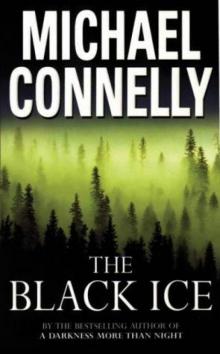 The Black Ice (1993)
The Black Ice (1993) Crime Beat: A Decade of Covering Cops and Killers
Crime Beat: A Decade of Covering Cops and Killers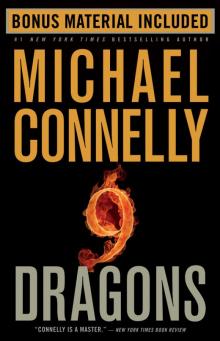 Nine Dragons
Nine Dragons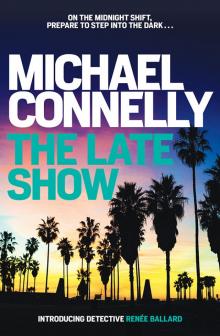 The Late Show
The Late Show City of Bones
City of Bones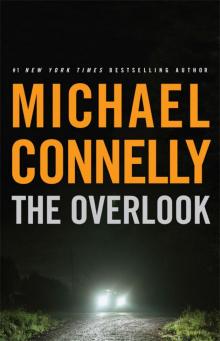 The Overlook
The Overlook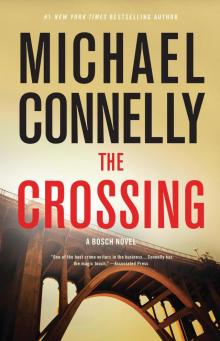 The Crossing
The Crossing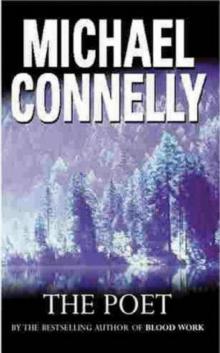 The Poet (1995)
The Poet (1995) Murder Worthy
Murder Worthy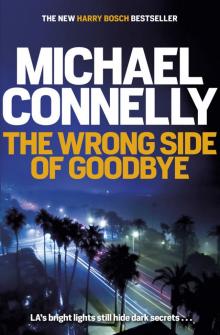 The Wrong Side of Goodbye
The Wrong Side of Goodbye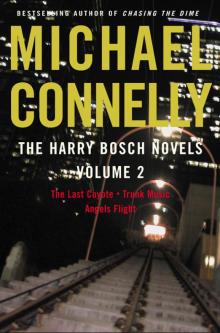 Harry Bosch Novels, The: Volume 2
Harry Bosch Novels, The: Volume 2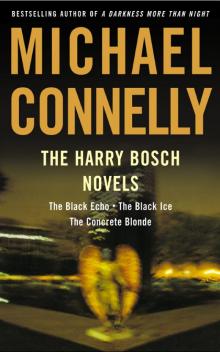 The Harry Bosch Novels
The Harry Bosch Novels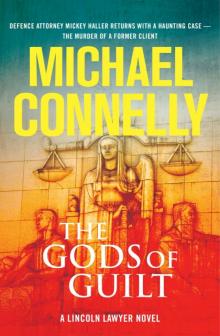 The Gods of Guilt
The Gods of Guilt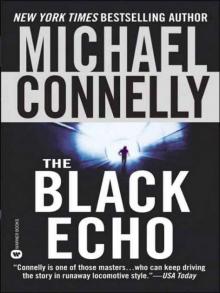 The Black Echo
The Black Echo The Reversal
The Reversal Two Kinds of Truth
Two Kinds of Truth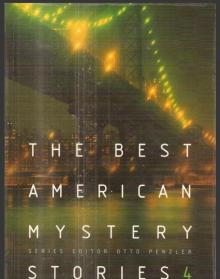 The Best American Mystery Stories 2003
The Best American Mystery Stories 2003 The Rag
The Rag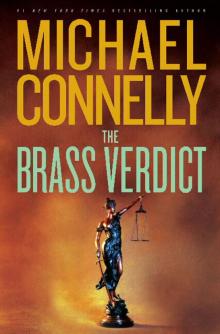 The Brass Verdict
The Brass Verdict The Black Echo (1992)
The Black Echo (1992) Switchblade
Switchblade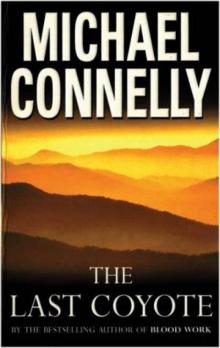 The Last Coyote
The Last Coyote The Narrows
The Narrows The Concrete Blonde (1994)
The Concrete Blonde (1994)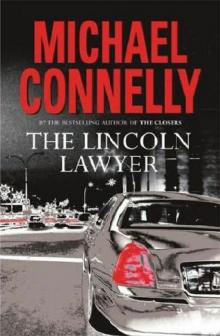 THE LINCOLN LAWYER (2005)
THE LINCOLN LAWYER (2005)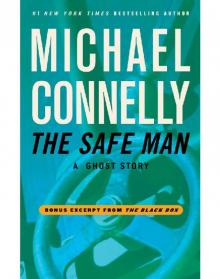 The Safe Man: A Ghost Story
The Safe Man: A Ghost Story Angels Flight (1998)
Angels Flight (1998) Void Moon
Void Moon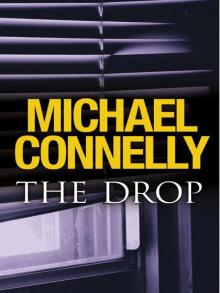 The Drop
The Drop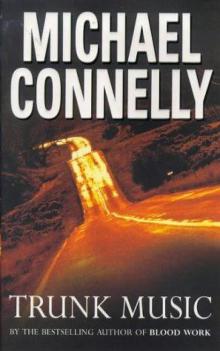 Trunk Music
Trunk Music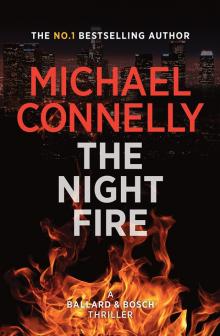 The Night Fire
The Night Fire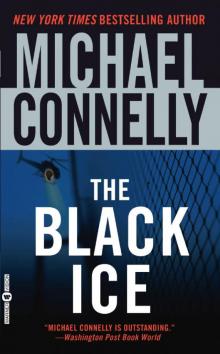 The Black Ice
The Black Ice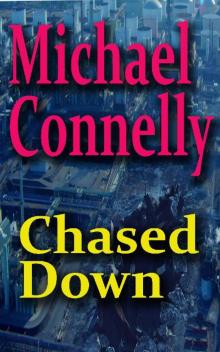 Chased Down
Chased Down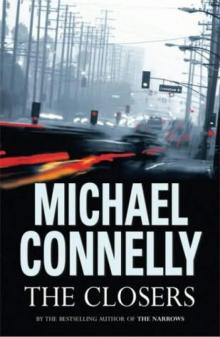 The Closers
The Closers The Burning Room
The Burning Room Angels Flight
Angels Flight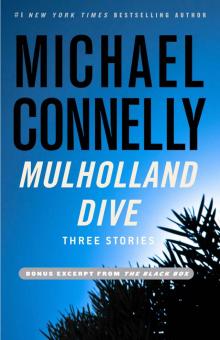 SSC (2012) Mulholland Drive
SSC (2012) Mulholland Drive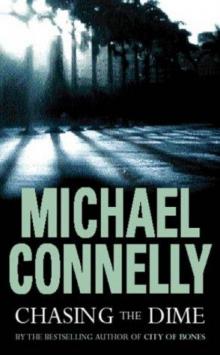 Chasing the Dime
Chasing the Dime The Lincoln Lawyer
The Lincoln Lawyer Blood Work (1998)
Blood Work (1998)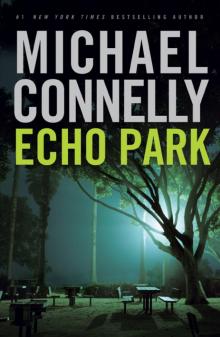 Echo Park
Echo Park A Darkness More Than Night
A Darkness More Than Night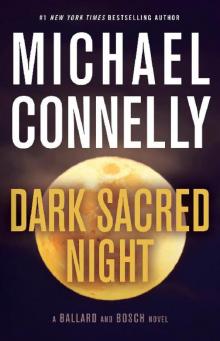 Dark Sacred Night - Ballard and Bosch #1;Renée Ballard #2
Dark Sacred Night - Ballard and Bosch #1;Renée Ballard #2 Lost Light
Lost Light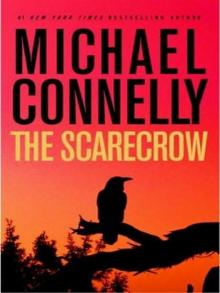 The Scarecrow
The Scarecrow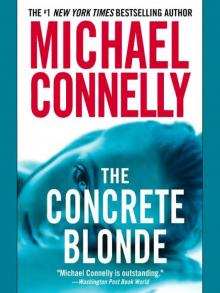 The Concrete Blonde
The Concrete Blonde Angle of Investigation
Angle of Investigation Suicide Run: Three Harry Bosch Stories
Suicide Run: Three Harry Bosch Stories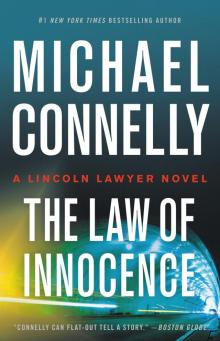 The Law of Innocence
The Law of Innocence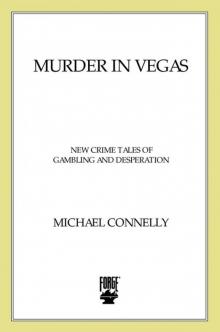 Murder in Vegas: New Crime Tales of Gambling and Desperation
Murder in Vegas: New Crime Tales of Gambling and Desperation City Of Bones (2002)
City Of Bones (2002)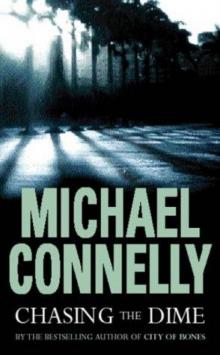 Chasing the Dime (2002)
Chasing the Dime (2002)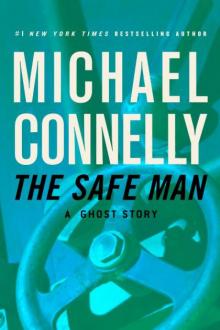 The Safe Man
The Safe Man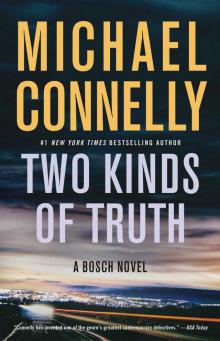 Two Kinds of Truth (A Harry Bosch Novel)
Two Kinds of Truth (A Harry Bosch Novel)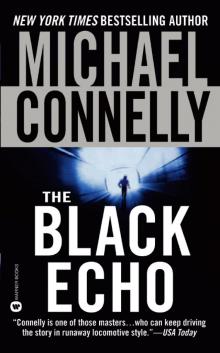 Harry Bosch 01 - The Black Echo
Harry Bosch 01 - The Black Echo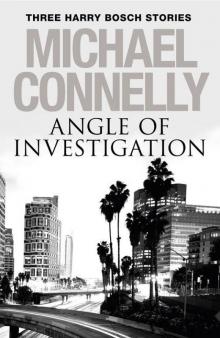 Angle of Investigation: Three Harry Bosch Short Stories
Angle of Investigation: Three Harry Bosch Short Stories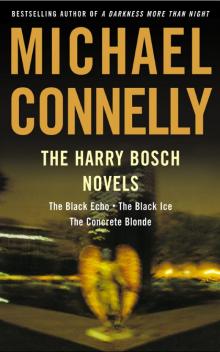 The Harry Bosch Novels Box Set 1
The Harry Bosch Novels Box Set 1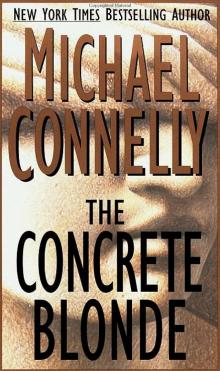 The Concrete Blonde hb-3
The Concrete Blonde hb-3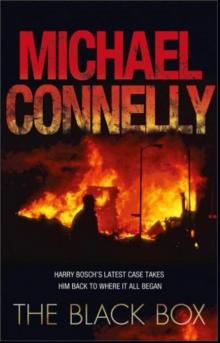 The Black Box hb-18
The Black Box hb-18 Short Stories
Short Stories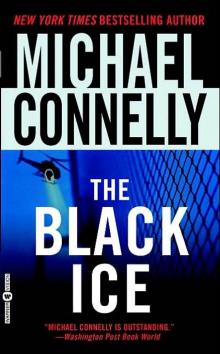 The Black Ice hb-2
The Black Ice hb-2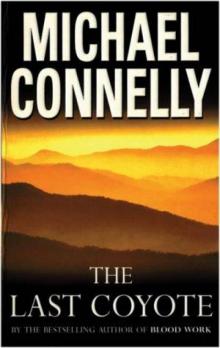 The Last Coyote (1995)
The Last Coyote (1995)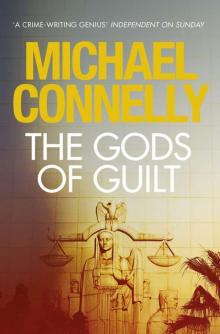 The Gods of Guilt mh-5
The Gods of Guilt mh-5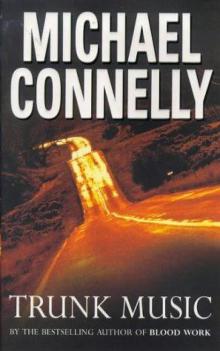 Trunk Music (1996)
Trunk Music (1996)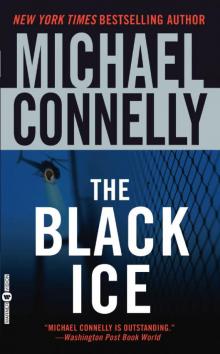 Harry Bosch 02 - The Black Ice
Harry Bosch 02 - The Black Ice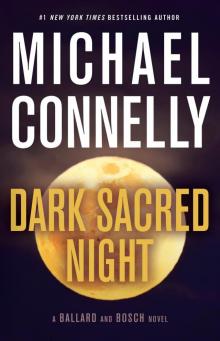 Dark Sacred Night
Dark Sacred Night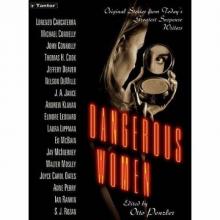 Cielo Azul
Cielo Azul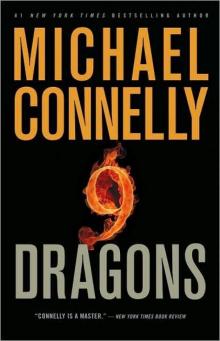 9 Dragons
9 Dragons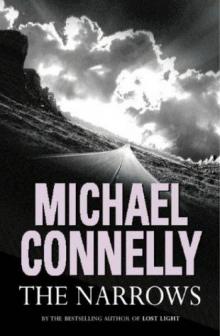 The Narrows (2004)
The Narrows (2004)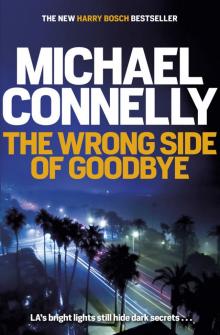 The Wrong Side of Goodbye (Harry Bosch Series)
The Wrong Side of Goodbye (Harry Bosch Series)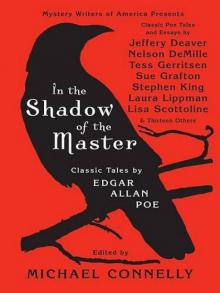 In The Shadow Of The Master: Classic Tales by Edgar Allan Poe
In The Shadow Of The Master: Classic Tales by Edgar Allan Poe Void Moon (1999)
Void Moon (1999)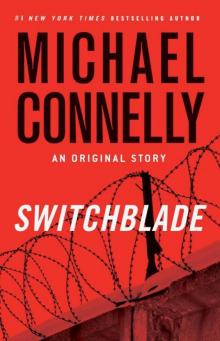 Switchblade: An Original Story (harry bosch)
Switchblade: An Original Story (harry bosch) The Harry Bosch Novels, Volume 2
The Harry Bosch Novels, Volume 2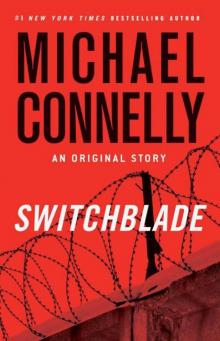 Switchblade: An Original Story
Switchblade: An Original Story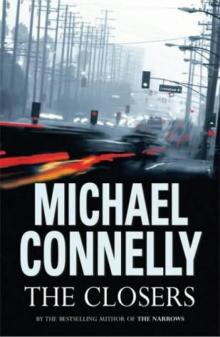 The Closers (2005)
The Closers (2005)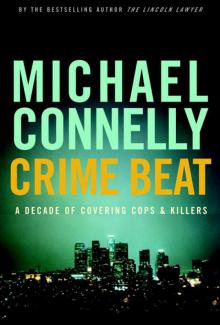 Crime Beat
Crime Beat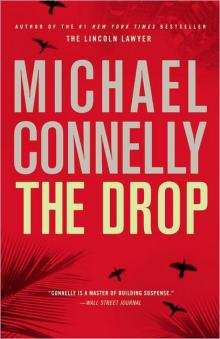 The Drop hb-17
The Drop hb-17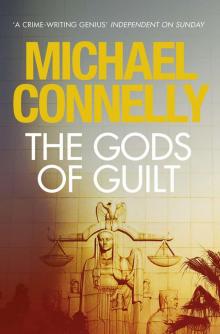 The Gods of Guilt (Mickey Haller 5)
The Gods of Guilt (Mickey Haller 5)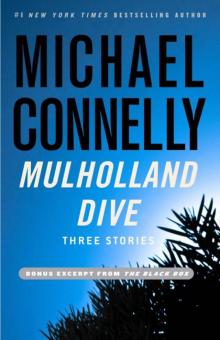 Mulholland Dive: Three Stories
Mulholland Dive: Three Stories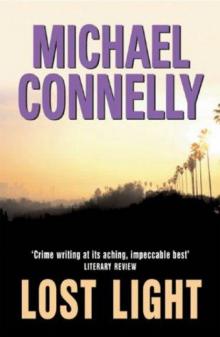 Lost Light (2003)
Lost Light (2003)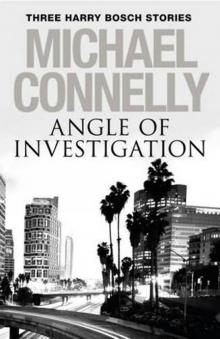 Angle of Investigation: Three Harry Bosch Stories
Angle of Investigation: Three Harry Bosch Stories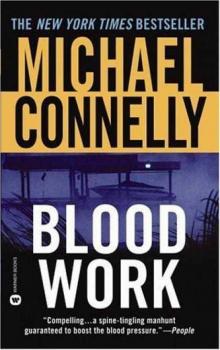 Blood Work
Blood Work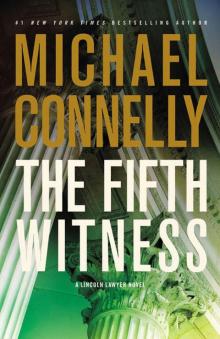 The Fifth Witness: A Novel
The Fifth Witness: A Novel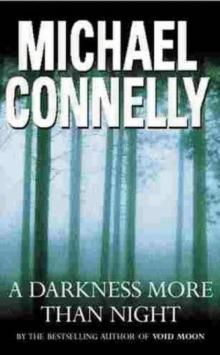 A Darkness More Than Night (2000)
A Darkness More Than Night (2000)